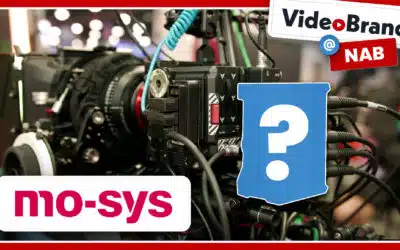Despite how long the RED camera has been out, RED: The Ultimate Guide to Using the Revolutionary Camera is one of the first books to tackle all the details of the camera. The author of the book, Noah Kadner, was cool enough to answer a few questions on his new book and the RED camera and future of film in general. He brings up a good point that while we can all get up in the technical aspects of moviemaking, it ultimately comes down to a great story. Enjoy!
If I get your book and know nothing about the RED camera, what level of expertise would I be at after reading it?
If you read the book from cover to cover you would gain a very solid level of knowledge about the RED workflow in production and post-production. You’d know the technical specifications of the camera, its history, how to put together a package at a variety of different budget levels and how to operate it both in terms of cinematography and data management. You’d also learn many different post-production workflows and methods for completing projects all the way through color correction, exhibition and even archiving projects.
Is your book just for cinematographers and camera people, or is it useful to producers and directors?
I wrote the book to be useful to everyone. It does have loads of useful information for serious cinematographers and camera people, but any time a term comes up that the average movie-goer might not know it’s defined and explained clearly. One of the big reasons I wrote the book was to help demystify the camera for directors and producers and even editors. These are critical decision makers who may be peripherally involved in actually using the camera but still want to understand how it all works.
Where do you feel the RED camera stands right now compared to the top end HD cinema cameras (Genesis, Arri D-21, Sony)?
It’s not for me to make a definitive technical comparison because if you search the web you can find literally dozens of camera tests with the RED and a variety of other HD cameras from some serious pros. I do think RED has most of the other cameras beat in two key areas- price and installed user base. Not only are your big guns from Sony, ARRI, Panavision, etc less affordable for the average production but the numbers of people who have hands-on experience or ownership are dramatically lower. That mean less free help from fellow users and also less 3rd party accessories. The other cameras are more big budget items at this point, excellent for what they do for those who can afford them but not mass market.
What about compared to film?
Comparing RED to film isn’t a simple matter either because there are so many factors to consider. Sure if you were to project a RAW R3D file from a RED ONE next to original 35mm camera negative on a 70 foot screen you might well see increased detail and latitude on the film. But what about the costs of negative stock, processing, telecine, negative cutting, release prints, etc. The RED has none of those hard costs, you can do all of the equivalent lab work yourself on the desktop. And in the end if the movie is well made most audiences will never know the difference.
I’ve been hearing different things such as the RED isn’t full 4k, and a lot of the numbers are hyped up for marketing reasons (and other elements are sacrificed to get that 4k number). I also learned that if you finish to 2k, the image is actually square, basically meaning the top and bottom are chopped off to a 1080 image (unless you shoot anamorphic). Can you clear some of this up or elaborate on what this means practically for productions.
This is something that a lot of the other camera makers have tried to gain traction with. RED is to date the only camera that saves its images as RAW 4K image files. Cameras like the Sony F-35 have a similar sized image sensor but down-sample the image in camera to a 1080p HD frame. So whether you want to make the argument that 4K is not really 4K is a matter of perception. Sure you could take a very fine grade scan of a 35mm negative at 4K and it might have more apparent resolution. But by the time it goes through a 2K process and back out to film the apparent differences begin to become indistinguishable in terms of resolution. Film negative has a more latitude to play with on the negative but again that advantage largely disappears when it goes out to film, DVD, Blu-ray etc.
As far as finishing to 2K or high-definition the RED ONE has many different aspect ratios you can shoot in, some are better suited to a film output and others optimized for HD. That’s one area I go over several times in the book- the importance of knowing where your movie will end up before you shoot so that you pick the most appropriate format to shoot in. The camera can shoot in 2:1, 16:9, anamorphic at a variety of different resolutions. Determining the best for a given project isn’t difficult but it does require some planning, which I outline thoroughly in the book’s pre-production sections.
I heard from a colorist that the RED raw files don’t have anywhere near the color space of film. Is this something DPs should be conscious of and does it mean more things have to be done right on set as far as color correction?
Just about any digital camera of today is going to have a bit less latitude than 35mm film but in the case of the RED I wouldn’t call it ‘nowhere near’ that of film. Maybe you have 20% less or something along those lines. I’ve watched a lot of color corrected RED footage and I can honestly say it looks pretty impressive. That’s also why it’s critical to use the onboard exposure tools like the zebras and waveform monitors so you know you’re not blocking up your shadow areas or blowing out your highlights. If you’re coming from most other HD or prosumer camcorders you’ll find out quickly RED has much more latitude than you’re used to right out of the box. And with the RAW workflow you can pull out amazing saves in post-production for shots that aren’t optimally exposed within the parameters of the camera.
Do you feel there’s a downside to being able to shoot more (such as more post-production time and money, longer production time)?
You could always take the tact that since you’re just recording images to a hard drive and not a physical piece of film you can run the camera much longer but a good filmmaker is a disciplined one. All the other hard costs involved with mounting a production still require you to stick to a schedule if you want to come in on budget. If anything it can save you money. Instead of calling action-cut and taking another 10 minutes to get setup for another take you can just have the actors go back and do the scene again while the camera continues to roll. One take gives you 3 takes and if you have it you can move on immediately instead of going for another take. If there’s any doubt, you just play the footage right back and check.
What major Hollywood film do you think has used the RED to its best potential? Worst?
Of the recent movies I’ve seen on RED I would have to say Knowing and District 9 have made the best use of RED. As far as its potential I think it says a lot that most people who went to see those movies had no idea which camera it was shot on or cared. Audiences got into it for the story or the actor or whatever it is that has always attracted people to a specific movie. And that’s sort of the point in the end. A lot of cameras that have come before also came with a lot of image compromises. Meaning you wouldn’t use them for a serious project if you had the money to afford 35mm film. It’s a democratizing technology much like the desktop publishing revolution of the ‘80s or the non-linear editing on the desktop revolution of the ‘90s. Now anyone who has a story can make a movie and they don’t have to make excuses for the way it looks.
What are your thoughts on the growing popularity of DSLRs being used for film work?
I think the concept of DSLRs that shoot high-definition video is a very exciting development and something that interests me a lot. So much so that I even started a blog about it- http://www.dslr-cinematography.com/
Cameras like the Canon EOS 5D Mark II and Nikon D300S are not ideal in terms of ergonomics or workflow but they allow you to use those very high quality still camera lenses. That means you can get great cinematic shallow depth of field and all the trappings of professional cinematography without the limitations of the small sensors and fixed lenses most prosumer camcorders bring.




